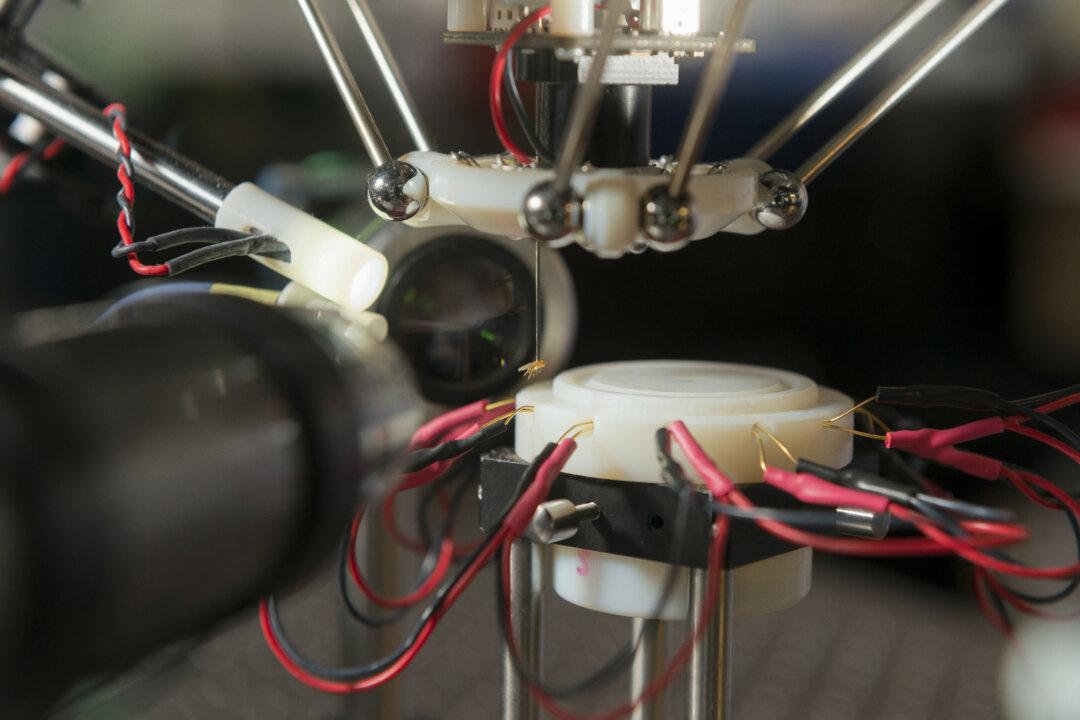Since the early 20th century, an unheralded star of genetics research has been a small and essentially very annoying creature: the fruit fly.
Underlying every significant discovery from fruit fly research—and there have been many, relating to almost every aspect of our own biology—is daily, monotonous time spent by scientists toiling over plastic dishes of conked-out flies.
Now a team led by Mark Schnitzer, an associate professor of biology and of applied physics at Stanford University, has introduced a solution to the tedium: a robot that can visually inspect awake flies and, even better, carry out behavioral experiments that were impossible with anesthetized flies.
“Robotic technology offers a new prospect for automated experiments and enables fly researchers to do several things they couldn’t do previously,” Schnitzer says. “For example, it can do studies with large numbers of flies inspected in very precise ways.”
The group did one study of 1,000 flies in 10 hours, a task that would have taken much longer for even a highly skilled human.
How It Works
The robot’s fly-snatching apparatus looks like nothing so much as a miniature UFO hovering over a plate of unsuspecting flies. When it’s ready to grab a fly, it flashes a brief infrared blast of light that is invisible to the flies and reflects off the animals’ thoraxes, indicating the location of each inhabitant.



